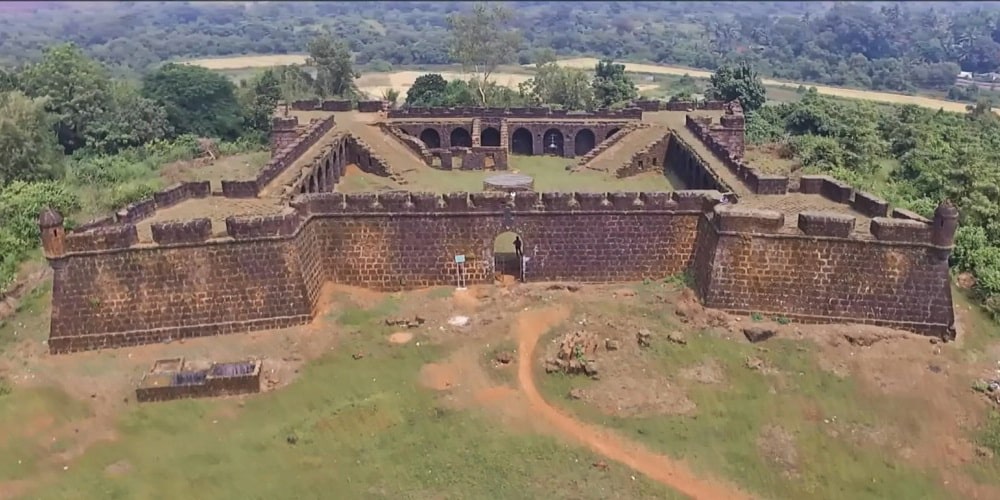

Corjuem Fort is a lesser-known yet significant historical landmark in the North Goa district of Goa, India. Situated on the island of Corjuem, the fort offers tourists a glimpse into the Portuguese colonial legacy prevalent throughout the region. The fort's vantage position provides panoramic views of the surrounding landscape, making it an attractive destination for history enthusiasts and sightseers alike.
The history of Corjuem Fort dates back to the 17th century. It was initially a military fortress used by the Marathas but was eventually conquered by the Portuguese in 1705. The Portuguese fortified and expanded the structure, using it to defend against invasions and insurrections during their colonisation of Goa.
The fort is notably smaller than others in Goa, but its strategic location made it crucial in controlling the inland routes. It's one of the few upstanding forts in the area that survived after the Portuguese era came to an end post-Indian independence in 1961.
Despite its historical importance, the fort fell into a state of neglect before being recognized for its potential as a tourism site. It has since then undergone restoration efforts to preserve its architecture and historical value.
In recent times, Corjuem Fort has become part of an offbeat travel trend, as tourists look to explore regions beyond the typical Goan beaches and parties. This tourism movement has led to an increase in the number of visitors keen on understanding Goa's rich cultural and historical tapestry.
The fort’s grounds are often used for hosting local events and cultural programs, ensuring that the legacy of the fort remains lively and accessible to the modern-day tourist.
Ecotourism has also gained popularity in and around the area, with the focus shifting towards sustainable travel practices. Tour operators and local authorities are working together to promote responsible tourism that minimizes environmental impact and benefits the local communities.
Visitors to Corjuem Fort can enjoy the surrounding lush greenery and the quietude that is rare in the more populated tourist spots of Goa. As there is no entry fee and it's relatively less crowded, it offers an escape for those looking to immerse themselves in history without the distractions of commercial tourism.
The fort is easily accessible via road from the capital city of Panaji and other major towns of North Goa. Open throughout the year, the best time to visit is from October to March when the weather is most pleasant. The fort is open to the public every day, and visitors are encouraged to explore the site during daylight hours for safety and to appreciate the fort’s architecture at its best.
As tourism evolves, there is a continuous push towards enhancing visitor facilities while maintaining the historical integrity of sites like Corjuem Fort. With increased interest in heritage sites, the fort is likely to see further conservation efforts and potentially more integration with local cultural experiences.
As the global tourism industry leans towards authentic and educational travel experiences, Corjuem Fort stands poised to become an influential symbol of Goa's historical allure.